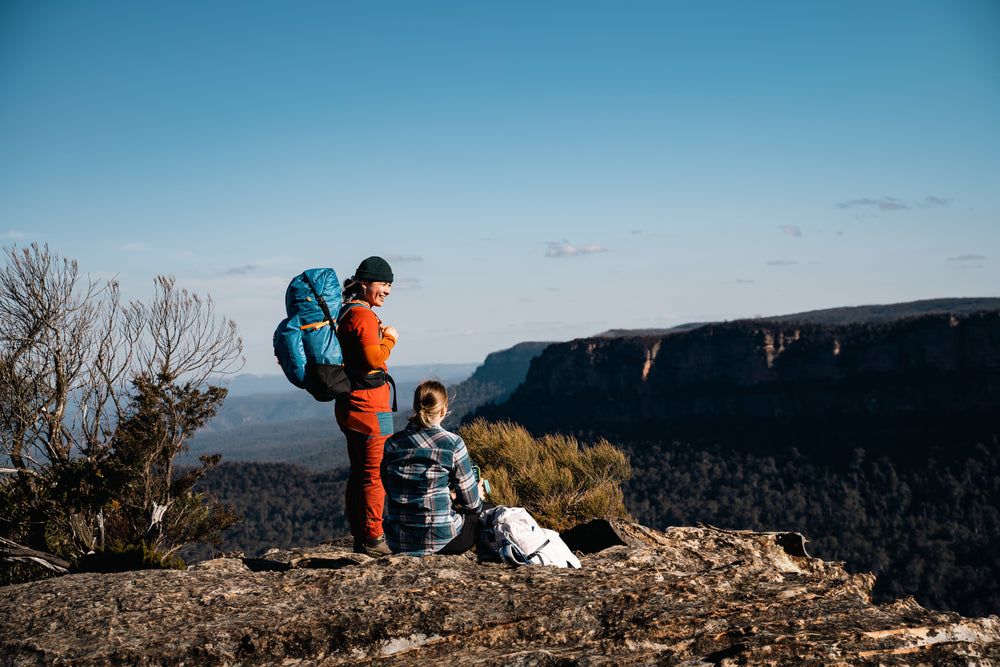The opportunities and challenges of manufacturing outdoor equipment in Australia
Whippa is quite unique in manufacturing all our packs in Australia. Over the years we have seen virtually all Australian manufacturers of outdoor equipment either disappear or move their manufacturing to low-cost countries such as China and Vietnam. The drivers for these decisions are strong – having recently received overseas labour quotes for $10 to manufacture a high-end pack, that takes over 4 hours to sew. With this price, factory owner receives a profit after wages and all overheads are paid. To my calculation, machinists making these packs cannot be getting paid any more than $2.00 per hour. Compare this to a rate of $40 AUD per hour that it costs to manufacture locally. Don’t get me wrong, our machinists deserve every dollar they make, and you could certainly argue they deserve more – they are highly skilled, passionate, and completely professional. The point here is you can see the cost savings are significant and appealing, which is the main reason companies nowadays do not manufacture in Australia.
So why do packs still cost so much if labour is so cheap?
If the ability to source such cheap labour exists, then why do high end packs cost $500-$700 AUD? The answer is simple – everyone has to take their cut. Supply chains are complex and there are mulitple parties involved in the process of developing, producing, and selling products. The factory has to make their profit so does the brand owner, then the wholesaler who distributes to retailers who then deliver the product to the end consumer. So, you can see there are multiple links in this chain with everyone taking their margin on the way through. With Whippa products you essentially purchase directly from the factory. This removes all the steps in supply chain and enabling us to acheive a similar price point. The challenge this presents at Whippa is that we cannot afford to sell to a wholesaler or another retailer which limits our reach, meaning for us to expand, we either must add new stores across the country, which is very expensive and highly risky, or reach customers via word of mouth and online. In 2024, this is becoming easier, where you can run a leaner more agile organisation and speak to customers directly via social media . The advantage and opportunity for us is we can manage the brand, the purchasing experience and post sales support end to end – ensuring customers needs are fullfilled properly.
Warranty and post warranty support
I believe this is often overlooked, but the advantage is real. We run our own factory in the Blue Mountains where we have all the components, materials, and skilled machinists to repair parts should anything go wrong. It is amazing how many times we get a 20-year-old pack, having been used to within an inch of its life brought back to us by a its owner, who loves the bag and wants to get another 5 years of out of it by replacing a damaged zipper or a worn-out base. We do this all the time! It is not very profitable, but we believe it is part of the value proposition we offer.
There is no way an imported brand will do anything with a pack such as this. The best they could offer you is to see if you can fix it yourself or buy a new one! Think about your experience if you were to buy an ultralight pack from our largest competitor. You invest $600+ to get an ultralight pack and something goes wrong, either by accident or a manufacturing defect. The retailer has purchased this pack from an American company who makes the packs in Mexico. If it is a manufacturing issue and is in the warranty period you should get it replaced. But what happens if it is outside the warranty period, or it was damaged by accident – you really are on your own. The materials and components to make these packs are not readily available in Australia.The advantage of manufacturing locally is that everything required to make the pack is here – the materials, components, zippers and machines. We truly care about our customers’ experiences and will do everything possible to get you back out adventuring with your favourite pack.
Scale vs agility
While manufacturing overseas can provide significant cost benefits to a business, it is also the reason there is limited choice and options – particularly in Australia. Each colour and size variation is essentially a different product and overseas factories only operate in large volumes. As a small local manufacturer, our efficiencies can be achieved at much lower volumes hence why were able to launch our Ultralight series of packs with 10 different colour options while even our largest global competitor still only offers black and white packs to their customers.
Manufacturing efficiently at reasonably small volumes is our niche and provides us a source of competitive advantage. The downside of this agility is some people believe we should be able to customize a single pack or make “minor changes” - the reality is that that this greatly drives up our costs to manufacture and almost never can be done at a price that the customer is prepared to pay.
Access to new technologies from around the world
In places such as the USA and Europe there are large conferences and exhibitions, showcasing the latest materials and manufacturing techniques. These events are just not offered in Australia since the market relatively much smaller. Keeping abreast of changes requires us to think differently, invest in research and develop deeper relationships with suppliers who are developing new materials. Recently I was on a call with the CEO of major high tech material manufacturer, where he shared with us his entire product development roadmap for the next 12 months. On this call he agreed to work with us to develop materials for new medical applications. 3 months later a new prototype material arrived which we are now incorporating into a future product development. Finding suppliers which are prepared to innovate with us is key to our success.
Finding Skilled Workers:
Sourcing skilled machinists has always been a challenge. A few years ago, it seemed like sewing was a dying industry and we would be forced into offshore manufacturing as we struggled to find staff to manufacture our packs. However more recently we had more success tapping into the amazingly skilled and creative people of the Blue Mountains, recruiting younger machinists interested in fashion as well as previous costume designers who have worked on big budget movie sets, or training retail staff who wants to get experience in sewing and designing products. I often think about how I can offer more interesting roles, involving staff in the design, marketing and sales process as well as the manufacturing. One thing is for sure, nobody sells a pack as well as the person who makes it – and after all who would dare ask the machinist who made it for a discount? 😊
Do people really value Australian manufactured gear?
First of all, my philosophy is that I don’t want our value proposition to be “purchase our packs because they are Australian made”. What I do want is customers to buy our packs because they are desirable, comfortable, technically superior or at least as good as, if not better, than any other brand available in the market. The decision then hopefully becomes easy to purchase locally and support Australian jobs with the added benefit of lifetime support and service. This, however, never seems to be the discussion that happens on outdoor adventure social media forums. The discussion is generally dominated by price which makes me often wonder – do people really care?
To counter this we recently had a customer, an Outdoor Educator from Tafe Victoria, who had been a passionate consumer of an other ultralight brand, yet found himself in the Summit Gear Store, reviewing our Ultralights packs. He was so impressed by the fact we made them locally. Viewing our packs from a position of knowledge and experience, he saw we offered key improvements to his old pack such as the large weatherproof stash pocket, load lifters that properly distribute the pack weight and brings the centre of gravity closer to the hikers back, all whist still weighing only 940g. Realising that our Overland 60 pack was of the highest quality and performance, he purchased it on the spot, happy to be supporting a company that was developing and manufacturing purpose built, performance packs locally.
The conclusion I have come to is some care and some don’t - but maybe enough do that we can sustain a good business. What works in our favour is the outdoor adventure community is filled with decent people who are aware of environmental and social issues. They rail against the disposable consumer culture and want to purchase products that are reliable, durable and would rather repair a product than throw it away and purchase a new one.
I do get it – a lot of us can be stretched financially and price has to be a key consideration – however, I have vision that Whippa can be an iconic Australian brand, known for delivering purpose built performance packs, and be a positive economic force in mountains we serve. Growth creates opportunity, it fuels development of new products all which need to be designed, manufactures, tested, photographed, marketed, reviewed and finally sold. During the development of our recent Canyon EX series we hired adventure guides, photographers, local influencers, and pooled all our own resources to design, prototype and test these packs. The investment made will circulate through the locally economy and I believe will deliver us one major advantage over other brands – a true affinity between our products and the community we serve.





